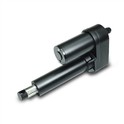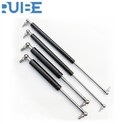Hey there! As a supplier of Mini Linear Actuators, I've seen firsthand how important it is to reduce power consumption. Not only does it save money, but it also helps the environment. In this blog post, I'll share some tips on how to make your Mini Linear Actuator more energy - efficient.
1. Choose the Right Actuator for the Job
The first step in reducing power consumption is to select the appropriate Mini Linear Actuator for your specific application. A lot of people make the mistake of using an actuator that's more powerful than they actually need. This means the actuator has to work harder, using more power in the process.
For example, if you're working on a small - scale project like a Linear Actuator for Tv Lift, you don't need a high - powered actuator. A Mini Linear Actuator with just the right amount of force and speed will do the job efficiently. Similarly, for a Linear Actuator for Standing Desk, you should pick an actuator that can handle the weight of the desk and move it at a comfortable speed without over - exerting.

2. Optimize the Power Supply
The power supply you use for your Mini Linear Actuator plays a crucial role in power consumption. Using a power supply with the correct voltage and current rating is essential. If the power supply has a higher voltage than necessary, the actuator will draw more power than it needs.
Most Mini Linear Actuators work well with a 24V Linear Actuator. Make sure your power supply is stable and regulated. A fluctuating power supply can cause the actuator to consume more power as it tries to compensate for the changes. You can also consider using a power supply with energy - saving features, like an auto - shutoff when the actuator is not in use.
3. Lubrication and Maintenance
Proper lubrication and maintenance are often overlooked when it comes to power consumption. A well - lubricated Mini Linear Actuator runs more smoothly and uses less power. Over time, the moving parts of the actuator can become dry and start to rub against each other, creating friction. This friction makes the motor work harder, which in turn consumes more power.

Regularly check the actuator for any signs of wear and tear. Replace any damaged parts immediately. Also, follow the manufacturer's recommendations for lubrication. Using the right type of lubricant can significantly reduce friction and improve the overall efficiency of the actuator.
4. Control the Speed and Force
Controlling the speed and force of the Mini Linear Actuator can have a big impact on power consumption. Running the actuator at a lower speed and using only the necessary force will save energy.
Many modern Mini Linear Actuators come with adjustable speed and force settings. You can use these settings to fine - tune the operation of the actuator according to your needs. For instance, if you don't need the actuator to move at full speed all the time, slow it down. This simple adjustment can lead to significant power savings over time.
5. Use Smart Control Systems
Smart control systems are a great way to reduce power consumption. These systems can monitor the operation of the Mini Linear Actuator and adjust the power output accordingly.
For example, a smart control system can detect when the actuator has reached its desired position and automatically cut off the power. It can also adjust the speed and force based on the load on the actuator. This way, the actuator only uses as much power as it needs at any given time.
6. Reduce Inertia
Inertia is the resistance of an object to changes in its motion. In the case of a Mini Linear Actuator, reducing inertia can help lower power consumption. You can do this by minimizing the weight of the load the actuator has to move.
If possible, use lighter materials for the parts that the actuator is attached to. Also, make sure the actuator is properly aligned. Misalignment can increase the inertia and make the actuator work harder.
7. Thermal Management
Heat can have a negative impact on the performance and power consumption of a Mini Linear Actuator. When the actuator gets too hot, the motor efficiency decreases, and it consumes more power.
Make sure the actuator has proper ventilation. You can use heat sinks or fans to dissipate the heat. Avoid placing the actuator in a hot environment or near other heat - generating devices. Regularly monitor the temperature of the actuator and take action if it starts to overheat.
8. Plan Your Operations
Planning your operations can also lead to power savings. If you have multiple Mini Linear Actuators in a system, try to stagger their operation. This way, they don't all draw power at the same time, reducing the overall power demand.
For example, if you have two actuators that need to move one after the other, program them to start at different times. This can prevent sudden spikes in power consumption and make the system more energy - efficient.
Conclusion
Reducing the power consumption of a Mini Linear Actuator is not only good for your bottom line but also for the environment. By following these tips, you can make your Mini Linear Actuator more energy - efficient and get the most out of it.
If you're interested in purchasing high - quality Mini Linear Actuators or need more advice on power - saving techniques, don't hesitate to get in touch. We're here to help you find the best solutions for your needs.

References
- Linear Actuator Handbook: A guide to understanding and using linear actuators effectively.
- Energy - Efficient Motor Systems: Research on how to optimize motor performance for reduced power consumption.
- Miniature Actuator Design Principles: Insights into the design and operation of small - scale linear actuators.






